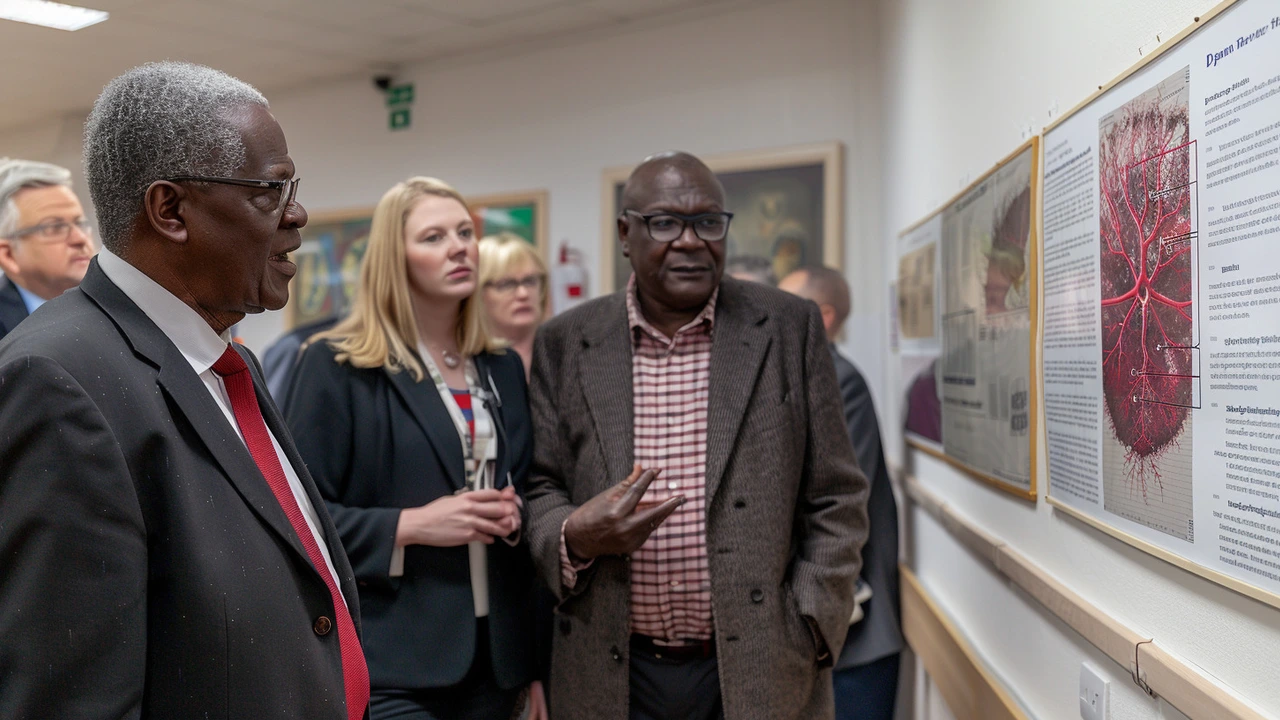This in-depth article explores the connection between Deep Vein Thrombosis (DVT) and Sickle Cell Anemia, two serious health conditions. It examines how Sickle Cell Anemia increases the risk of DVT, offers practical tips for prevention, and discusses the importance of early diagnosis and treatment. The aim is to provide valuable information for both patients and healthcare providers.
Sickle Cell Anemia: What It Is, How It Affects You, and What You Can Do
Sickle cell anemia is a genetic blood disorder that makes red blood cells turn into a stiff, crescent shape. Those misshapen cells can’t flow smoothly through tiny blood vessels, which leads to pain, organ damage, and a higher risk of infection.
The condition is inherited when a child receives two copies of the sickle‑cell gene—one from each parent. If you have just one copy, you’re a carrier (sickle‑cell trait) and usually feel fine, but you can pass the gene to your kids.
Typical Signs and When to Seek Help
Most people notice symptoms in early childhood. Common signs include:
- Episodes of severe pain, called vaso‑occlusive crises, often in the bones, chest, or abdomen.
- Chronic fatigue because the sickle cells break down quickly, causing anemia.
- Frequent infections, especially from the lungs and spleen.
- Delayed growth and puberty in children.
- Yellowing of the skin or eyes (jaundice) due to increased bilirubin.
If you or your child experience sudden, intense pain, fever, or shortness of breath, call a doctor right away. Early treatment can stop a crisis from getting worse.
Modern Treatments – What the FDA Has Approved
For decades, the mainstay was supportive care—pain meds, blood transfusions, and antibiotics. In the last few years, the FDA cleared several disease‑modifying drugs that actually reduce sickling.
Hydroxyurea was the first. It boosts fetal hemoglobin, which stops red cells from sickling. Most patients see fewer pain episodes and need fewer transfusions.
L‑glutamine (Endari) works by lowering oxidative stress in red cells. Clinical trials showed a modest drop in crisis frequency.
Voxelotor (Oxbryta) binds directly to hemoglobin, keeping it in a shape that can carry oxygen without forming the sickle shape. It improves anemia and reduces hemolysis.
Crizanlizumab (Adakveo) is a monoclonal antibody that blocks a protein (P‑selectin) that helps sickled cells stick to blood‑vessel walls. Patients on this drug often report dramatically fewer pain crises.
All four are prescription‑only, so you’ll need a hematologist who specializes in sickle cell disease. Your doctor will decide which therapy (or combination) fits your health profile.
Beyond medication, regular check‑ups are key. Blood tests track hemoglobin and organ function, while imaging checks for silent damage to the spleen, kidneys, or brain.
Everyday Tips to Keep You Feeling Better
Medication helps, but lifestyle choices still matter. Stay hydrated—dehydration makes cells stick together. Aim for at least 8 glasses of water a day, more if you’re active or in hot weather.
Keep a balanced diet rich in folic acid (leafy greens, beans, citrus) to support red‑cell production. Some patients also benefit from vitamin D and calcium to protect bone health.
Exercise is good, but don’t overdo it. Low‑impact activities like walking, swimming, or yoga keep blood flowing without stressing your joints.
If you travel to high altitudes, talk to your doctor first. Lower oxygen levels can trigger a crisis.
Finally, group support works wonders. Connecting with other people who have sickle cell disease—online forums, local clubs, or patient‑advocacy groups—helps you stay motivated and learn practical hacks.
Living with sickle cell anemia isn’t easy, but with modern FDA‑approved treatments, smart self‑care, and a solid medical team, you can cut down pain episodes and enjoy a higher quality of life.

